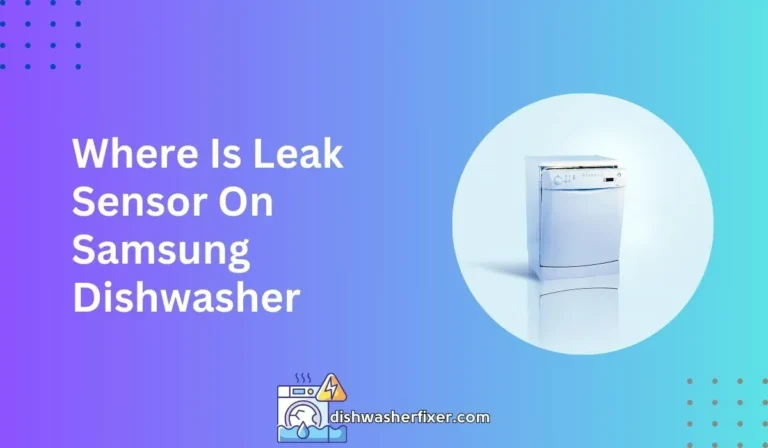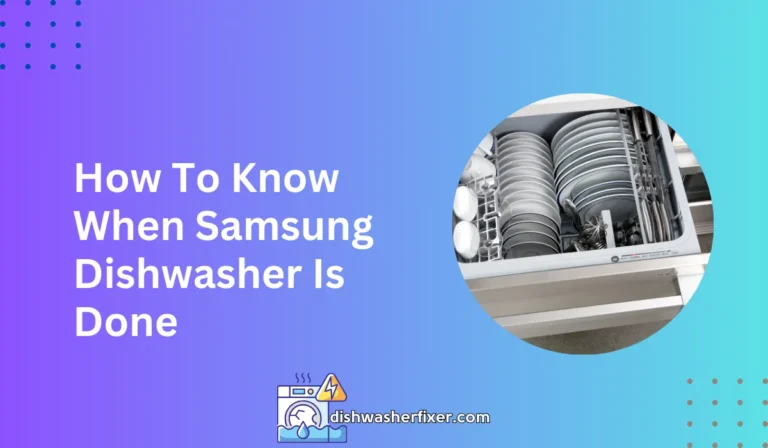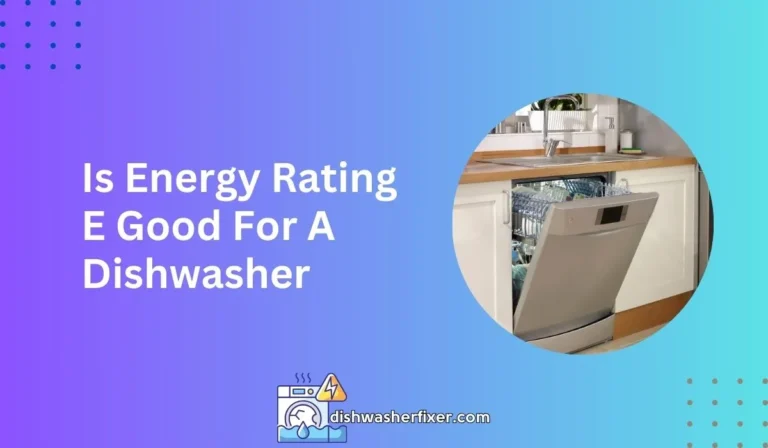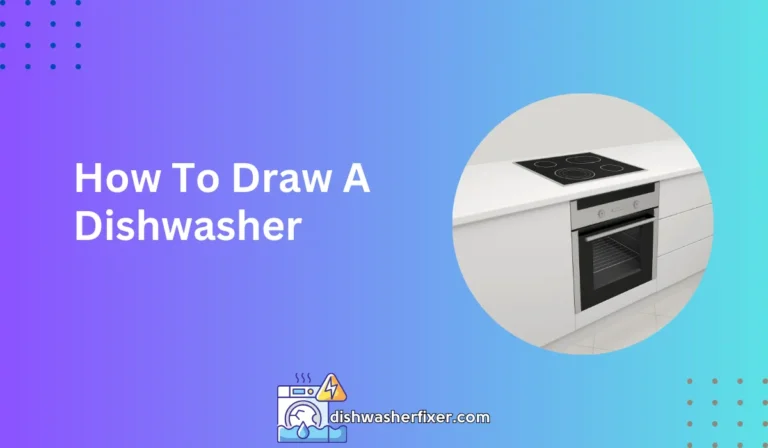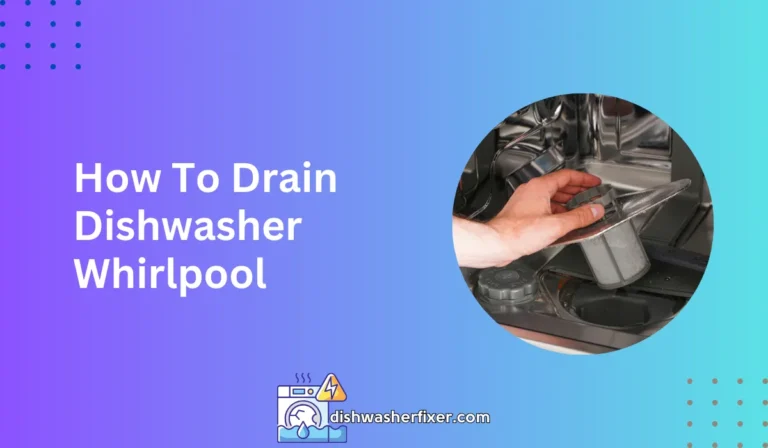How to Unclog a Dishwasher with Vinegar and Baking Soda
To unclog a dishwasher with vinegar and baking soda, first remove any visible debris from the drain. Pour 1 cup of baking soda into the drain, followed by 1 cup of white vinegar. Let the mixture fizz for 10-15 minutes, then flush with hot water. Run a short wash cycle to clear residue.
Understanding the Cause of the Clog
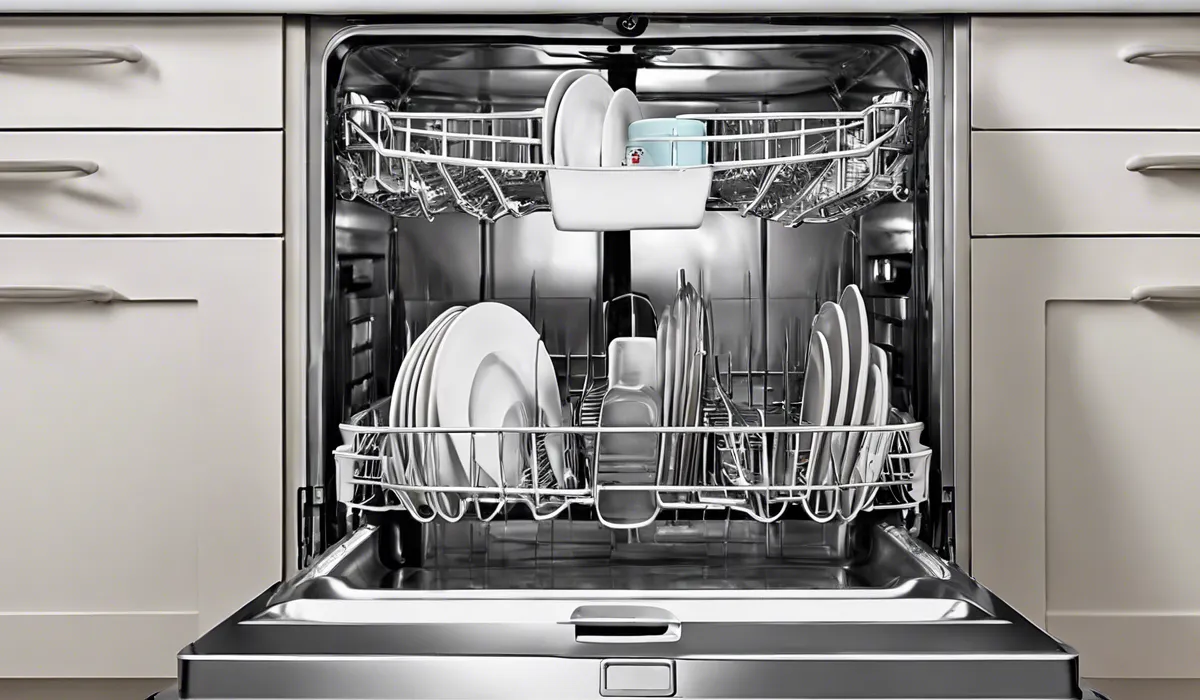
Common Reasons for Dishwasher Clogs
Clogs in your dishwasher can be a real nuisance, but understanding why they occur is the first step towards fixing them.
The most common culprits are food particles that escape from dishes, grease that solidifies in the pipes, and soap scum that builds up over time.
These substances can stick to the dishwasher’s internal parts or accumulate in the drain, forming a blockage that prevents water from passing through effectively.
Regular Maintenance to Prevent Clogs
Regular maintenance is crucial for keeping your dishwasher in top working condition. By cleaning your dishwasher regularly, you can prevent the accumulation of food particles and grease that lead to clogs.
This includes wiping down the interior, checking for and removing any leftover food after each cycle, and ensuring that the drain is clear of debris.
The Role of Vinegar and Baking Soda
Vinegar and baking soda are household staples that also double as effective cleaning agents for your dishwasher.
Vinegar, with its acetic acid content, can help break down grease and deodorize the machine, while baking soda’s mild abrasive properties and alkalinity can help in scrubbing away soap scum and neutralizing odors.
Step-by-Step Guide to Unclogging with Vinegar and Baking Soda
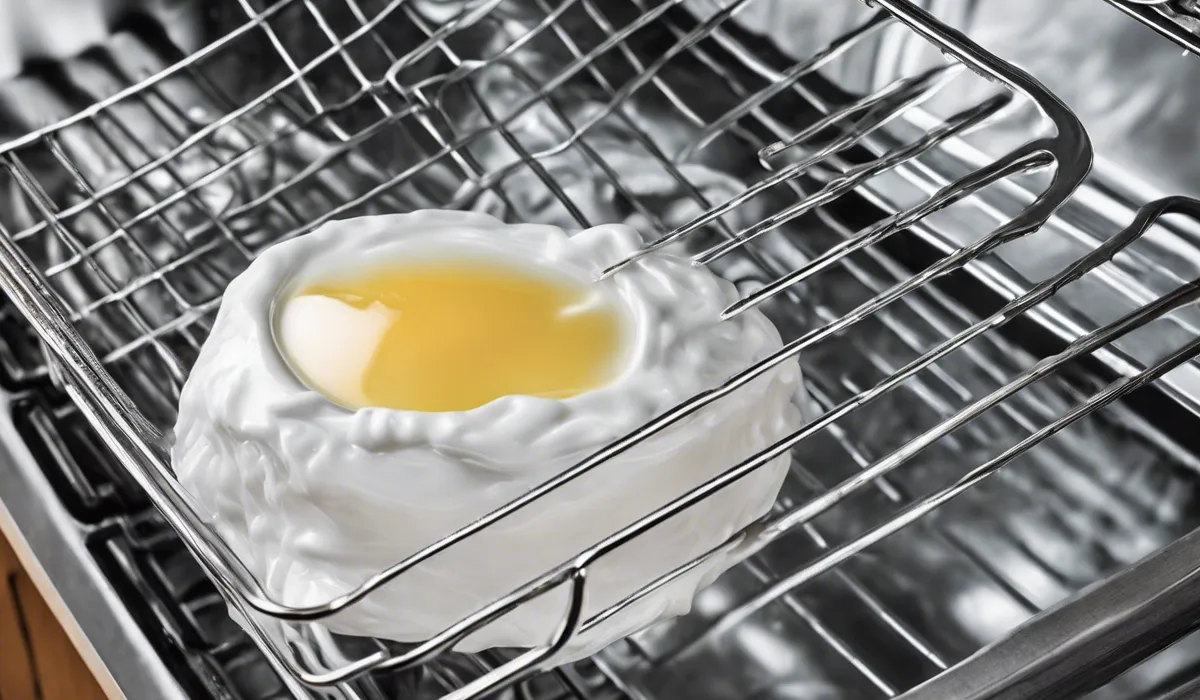
Preliminary Steps
Before you begin the unclogging process, remove and clean the dishwasher’s filter. This is usually found at the bottom of the machine and can be easily unscrewed for cleaning.
Rinse it under running water and scrub gently with a soft brush to remove any trapped particles. Also, check the drain area for visible blockages and remove any debris.
Step 1: Preparing the Dishwasher
Empty your dishwasher completely. Remove all dishes, utensils, and racks. This ensures that the cleaning agents can reach all areas without obstruction.
Additionally, make sure that the machine is turned off and that you’re taking appropriate safety measures, such as wearing gloves if you have sensitive skin.
Step 2: The Vinegar Cycle
For the vinegar cycle, you will need 1 cup of white vinegar. Place a dishwasher-safe bowl or cup on the top rack of your dishwasher and pour the vinegar into it.
Select a hot water cycle and start the dishwasher. The heat will help the vinegar to disperse and work on dissolving any clogs.
Step 3: The Baking Soda Cycle
Once the vinegar cycle is complete, sprinkle 1 cup of baking soda across the bottom of the dishwasher.
Run a short cycle with hot water. The baking soda will help in further cleaning and freshening your dishwasher, as well as assisting in dislodging any residual clogs.
Step 4: Assessing the Results
After completing both cycles, inspect your dishwasher. If water drains smoothly, the clog has likely been cleared.
If issues persist, you may need to repeat the process or proceed with other methods, such as using a plunger or a plumber’s snake. When in doubt, consult a professional.
Maintenance Tips to Keep Your Dishwasher Running Smoothly
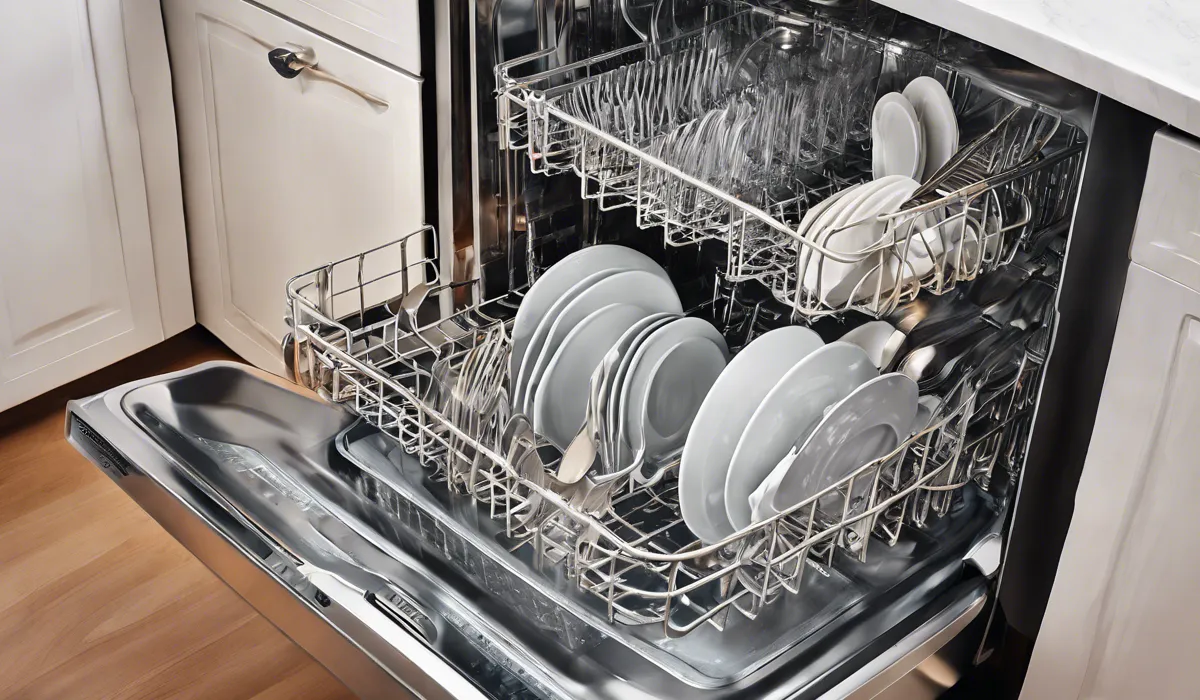
Cleaning Routines for Filters and Spray Arms
Regularly clean your dishwasher’s filters and spray arms to ensure they are free from food particles and grease.
This practice not only prevents clogs but also maintains the efficiency of your dishwasher. Detach the spray arms and rinse them under water, using a toothpick to clear the holes if necessary.
Monthly Vinegar and Baking Soda Treatments
To prevent future clogs, conduct monthly cleanings using vinegar and baking soda.
This proactive maintenance routine will keep your dishwasher fresh and help avert the buildup that leads to clogs, saving you from potential headaches down the line.
Best Practices for Loading the Dishwasher
Load your dishwasher correctly to reduce the risk of clogs. Avoid overcrowding, and place large items at the sides and back to prevent them from blocking the water and detergent.
Scrape off large food particles before loading, and position the dirtier side of dishes toward the spray arms.
When to Call a Professional
If your dishwasher remains clogged after multiple attempts to clear it, it may be time to call a professional. Persistent clogs could indicate a deeper issue that DIY methods cannot resolve.
A skilled technician can diagnose and fix the problem, ensuring your dishwasher is back in good working order.
FAQs About Unclogging a Dishwasher with Vinegar and Baking Soda
How much baking soda and vinegar do I need to unclog my dishwasher?
You will need 1 cup of baking soda and 1 cup of white vinegar to unclog your dishwasher.
What should I do before applying the vinegar and baking soda?
Before applying the vinegar and baking soda, remove any visible debris from the dishwasher drain.
How long should I let the baking soda and vinegar mixture sit?
Let the mixture fizz in the drain for 10-15 minutes before flushing with hot water.
Do I need to run the dishwasher after using vinegar and baking soda?
Yes, after flushing with hot water, run a short wash cycle to clear any residual debris and mixture.
Can I use any type of vinegar to unclog my dishwasher?
White vinegar is recommended for unclogging a dishwasher, as it is effective and does not leave behind any residue.
Final Thoughts
To effectively unclog a dishwasher, begin by removing any debris from the drain. Apply a combination of 1 cup baking soda and 1 cup white vinegar directly into the drain, allowing it to fizz and work for 10-15 minutes.
Conclude the process by flushing with hot water and running a short wash cycle to eliminate any remaining residue.

